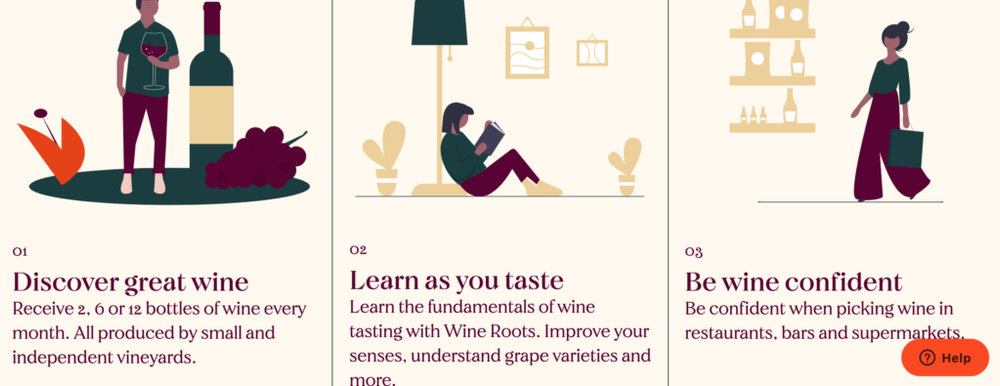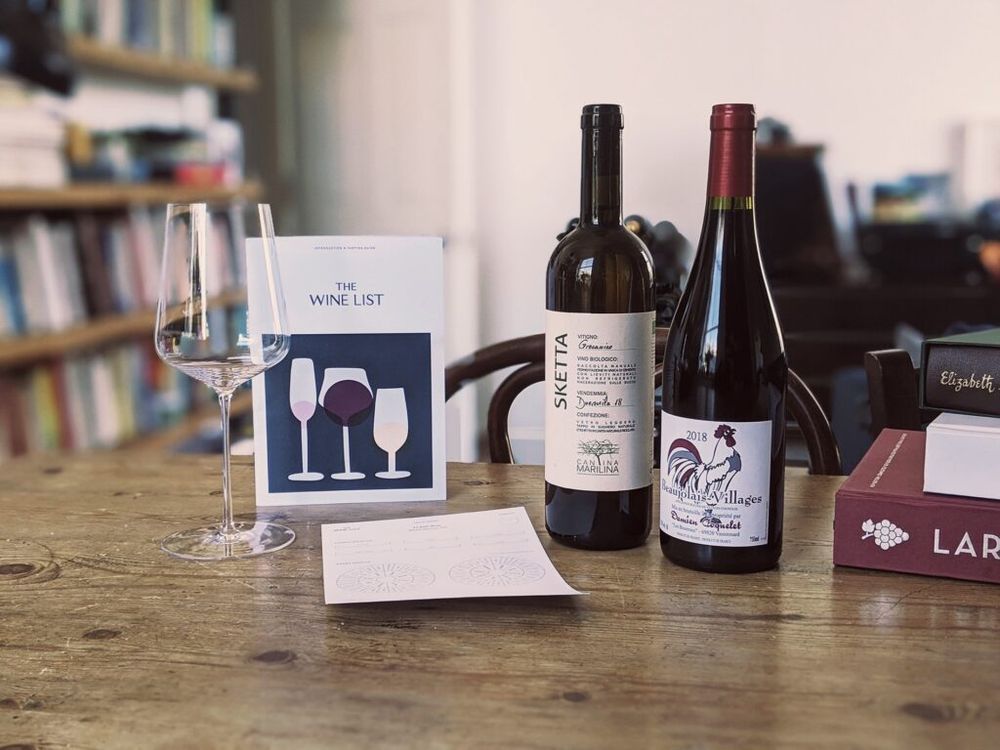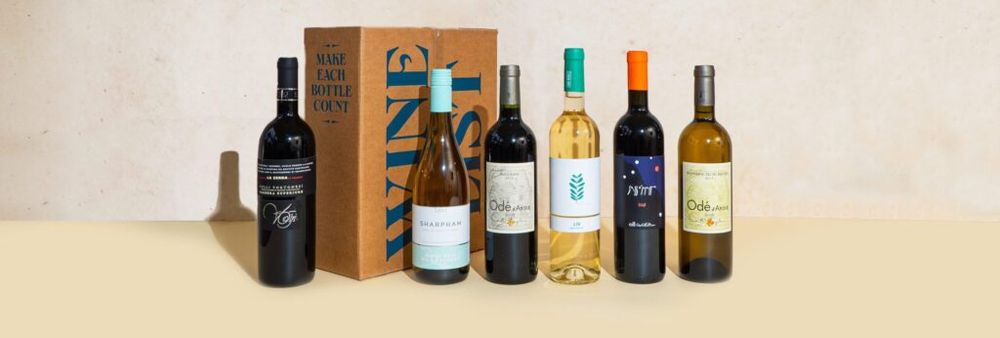Wine List is a new subscription wine service that hopes to introduce more diverse wines to less confident wine drinkers who want to learn more with each box of wine they sign up for.
The last year has seen people sign up for home delivery wine services and subscription sites like never before. But are they going to carry on ordering once the on-trade is fully back and open and we are not all confined to our homes? Will consumers still be as keen to taste and discover new wines?
Josh Lachkovic believes he has a wine subscription service – Wine List – that can work post pandemic and appeal to those who may only have a beginner’s level of knowledge of wine, but are keen to find out more, quietly educate themselves and are looking for more obscure wines to buy.

Josh Lachkovic switched from a career in health, food and drinks start ups to create his own wine subscription service
He actually started Wine List in 2019 in direct response to taking a WSET course a year earlier. It proved to be a significant moment for Lachkovic, who was working in growth marketing roles in food and drinks companies like Pact coffee at the time. “Wine was always a very big passion of mine. Then what initially began as a passion suddenly turned into an obsession,” he says. “[The WSET] was really spot on for someone who may be quite nerdy about things and want to get into detail.”
But he also felt the qualification wasn’t offering what a satisfying educational experience forthose at all levels of interest in wine. “Wine is drunk by 33 million people in the UK, but the vast majority aren’t ever going to go study the WSET.”
And so began the process of creating Wine List, in a bid to make wine education less pretentious, and more appealing to a wider audience.
He first started out making a podcast about English wine and set off making contact with around 30 winemakers across the country. “That was the biggest part of my education,” says Lachkovic. “I got to speak with winemakers and walk around vineyards, I got to do tastings, taste what underripe grapes are like, or what perfectly ripe grapes are like. It was a very zig-zagged approach through trading.”
Step by step

How Wine List works…
Lachkovic then launched the Wine List in 2019 through a weekly newsletter. “In its very early days it was a bitesize lesson on wine. Answering questions like what is acidity? Followed by a review on what wines I’d enjoyed that week,” he says.
From receiving a range of positive feedback on the newsletter, Lachkovic was then encouraged to help people access more good wines. Lachkovic says: “What I discovered from talking to people was that people would have never gone out and bought those wines before, because sometimes they’d have to have minimum orders, or they didn’t live near a good wine shop. The Wine List was created so we could share the wines that we were talking about.”
To get people expanding their wine collections they offer a range of online and offline educational resources: “We have a wine course which most people join regularly, and we have a monthly tasting video. On top of that we also do individual tasting classes which are focused on the region or an area – those are usually engaged with more advanced [customers]. Everything we’re doing is focused on helping you as a community of learners.”
The subscription box, which is sent out on a monthly basis, forms an important base of the learning process. “There’s a different module each month in each box,” says Lachkovic. “The first is on how you taste wine. There’s a 12-page introductory booklet, you learn about things like grape skins, skin contact, you learn about altitude and climate, the booklet also links through to digital content. These videos can then teach show you how wines are made in a vineyard for examples.”

Customers can pay for pre-recorded videos about different regions which they can watch in their own time whilst tasting the wines they have bought
Learning as you go
The aim of the 12-month course, ‘Wine Routes’, is to give people the basic knowledge about wine making before anything else. “It’s less about needing to memorise all these different regions,” says Lachkovic. “It’s more about learning how a wine got from the grapes in a vineyard to your glass. And you can then apply that knowledge to every wine you drink.”
To figure out what goes into each monthly box, Lachkovic seeks the help from the Wine List’s head of wine, Isabelle Lynch. “For a long time, it was just me and Alice [Warr, operations manager]. In the early days it was very much ad hoc, just tasting what we could and see what we like” says Lachkovic. “Now we design those boxes a bit more according to what time of year it is, or what’s interesting about those wines.”
They also look to pick out wines that aren’t so mainstream. “Broadly speaking, all of our wines are lesser known and by that we mean lesser-known regions, or lesser-known grape varieties,” says Lachkovic. “We’ve never sent out a Bordeaux or Burgundy, a Rioja or a Borolo in our core experience. But we have sent out things like Czech Chardonnay, Austrian Grüner, or wines from Greece and even Israel. These are lesser-known wines in the world that are really enjoyable, really characteristic, and there is something to learn from them.”
Helping to make wine decisions

Wine List looks to build up its regular customers knowledge and confidence in the wines they go on to order
Don’t be mistaken, the Wine List are not telling you what wines to buy. In comparison to popular apps such as Vivino, Lachkovic says: “[It] tries to give you the answers, and we try and help people learn to make that decision for themselves.” While he acknowledges its useful aspects, for example when deciding what wine to buy in a supermarket, he says that at the Wine List, “we want to become far more engaged with people’s day-to-day wine journeys. Whether that’s through Instagram content, or how we talk through emails, we try to get a much deeper relationship with the customer. As a result, Vivino will have tens of millions of users, while we want to have tens of thousands.”
While apps like Vivino then are not necessarily its competition, wine box subscriptions are and they are abundant in the market at the minute. “There are hundreds if not thousands of people who sell their wine online and can box it in a certain type of subscription with their own angle on it, so you really to have to stand out,” says Lachkovic.
That’s where skilful social media content comes in, he says. “We hired Ellen [Brown] very early on into our team. She’s making different types of content to engage with every week, we also make use of YouTube, we’re searching of different ways of engaging on a daily basis with our customers.” One of their regular features are their IGTV videos where their head of wine, Isabelle Lynch, talks through the bottles that feature in the monthly subscription boxes, or even a selection of lesser-known wines from major supermarkets like Marks & Spencer’s.
(Here’s an example of one of Wine List’s YouTube tasting videos with Isabelle Lynch)
While Lachkovic acknowledges Wine List’s aim is to make wine education more accessible, it is tailored to a specific market. “I mean 33 million people drink wine in the UK, but that does not mean that 33 million people are our target audience,” says Lachkovic. “We’re looking to target people who are drinking wine and who are starting to make it a hobby. It’s those people who are starting to think, ‘Oh, I wonder why that year tastes different to the year before?’ That can happen at any time. We’ve got customers who are 23, and we’ve got customers who are 73.”
Lockdown boost
The pandemic prompted a large influx in new members to the Wine List, as the team expected. Lackhovic says, “We’ve definitely benefited from it. All the potential trends were heading that way anyway. In general people are favouring [wine] experiences more than ever.”
In that sense, he isn’t too worried about a return to in-person life now that restaurants and bars are opening up in the UK, “I’m cautiously optimistic. I think this is going to be a hybrid future. People are used to spending £15 or £25 on a bottle at home now instead of the usual £7.”

Despite being primarily a virtual learning environment, Lachkovic has not ruled out the possibility of increasing in-person activities in the coming months. “Last September we did an event with Peckham Cellars in south London. They provided the food, and we provided the wine, and that turned out to be a great evening. We’re very much thinking about how we start to bridge the online and offline space to bring people together.”
Wine List is also a service that has provided people outside of London with access to unique wines that they wouldn’t have been able to buy otherwise. This makes them more likely to be continuously useful to many post-lockdown. “About 60% of our customers don’t live in London, and a lot of the time these conversations are very London-centric,” says Lachkovic. “We have lots of customers who tell us they don’t have a good wine merchants nearby and doing a wine tasting wouldn’t have been an option even pre-pandemic.”
Lachkovic hopes that even as the on-trade re-opens, Wine List will remain the prime space for many more new wine lovers for theirs wine experiences.
- You can find our more about how Wine List works here.































